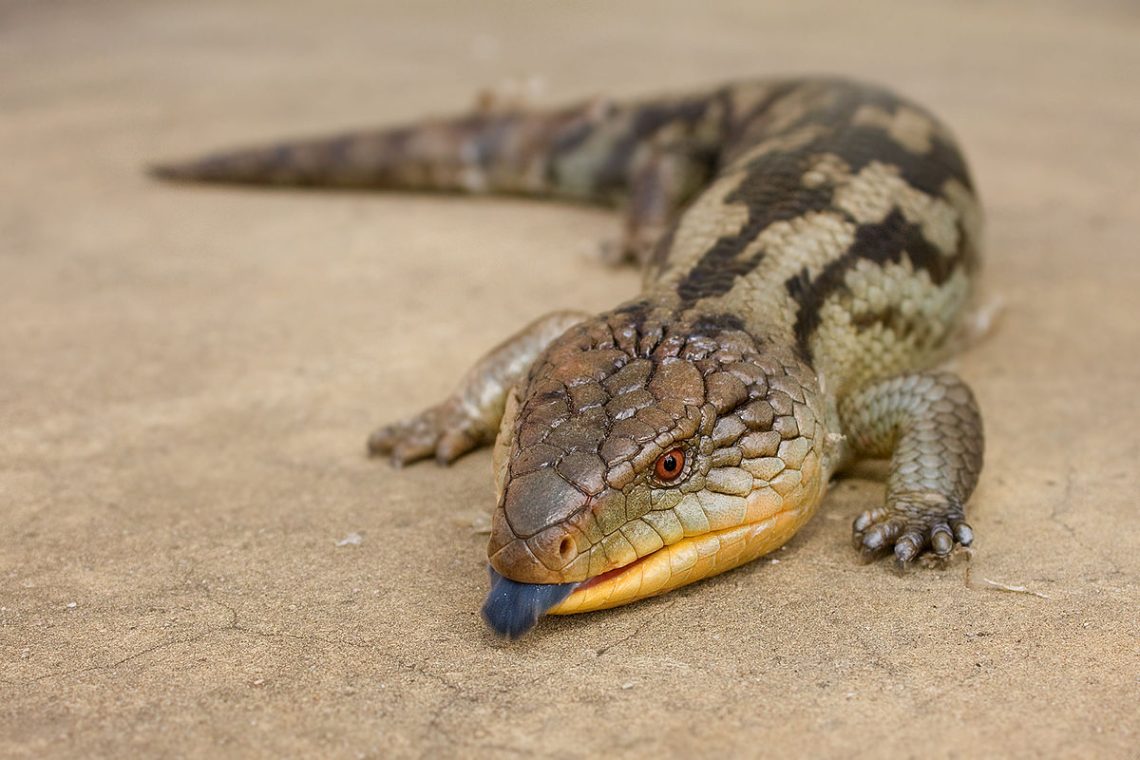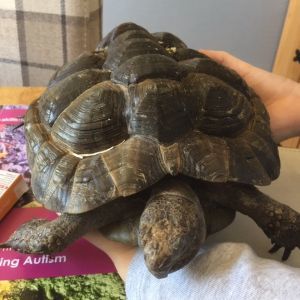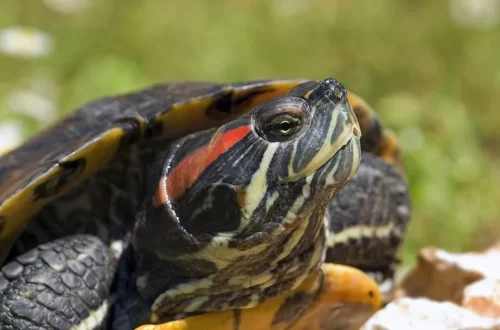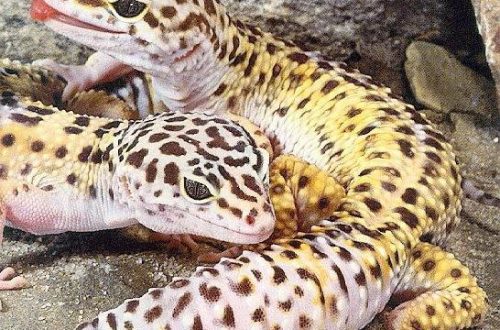
Blue-tongued skink.
To begin with, after the first acquaintance with these amazing lizards, they won my heart once and for all. And although they are not yet so widespread among reptile lovers, this is only due to the fact that their export from natural conditions is prohibited, and breeding at home is not a quick matter.
Blue-tongued skinks are viviparous, they bring 10-25 cubs a year, while offspring do not happen every year. For all other characteristics, these animals deserve to be considered truly pets. It is difficult to remain indifferent, looking at their smiling faces with a completely meaningful look. And this amazing blue tongue, so contrasting with the pink mucous membrane of the mouth and the gray-brown color of the animal?! And in terms of intelligence, they are not inferior to iguanas, sometimes even surpassing them. In addition, skinks bred at home are quickly tamed, willing to make contact, they are interested in everything that happens around, while they are quite calm and friendly, they can recognize the owner, respond to certain sounds, objects, people. In the process of their life side by side with you, they will certainly form many individual habits and characteristics, which will make observing and communicating with them very entertaining. And they live in good conditions for about 20 years or even more.
Blue-tongued skinks are reptiles of quite impressive size (up to 50 cm). At the same time, they have a dense physique and short muscular legs. So they can be picked up without fear of fragility (as, for example, agamas, chameleons and others).
These wonderful creatures come from the tropics of Australia, Guinea and Indonesia, they can also inhabit mountainous regions, very arid territories, live in parks and gardens. There they lead a terrestrial daytime lifestyle, but quite deftly climb snags and trees. In food, skinks are not picky and eat almost everything (plants, insects, small mammals, and so on).
To ensure a comfortable existence for the pet, a horizontal terrarium about 2 meters long, 1 m wide and 0,5 m high, with side doors is needed (so the pet will not regard your “invasion” as an attack from the enemy from above). Inside you can place snags and be sure to shelter. Under natural conditions, skinks hide in burrows and crevices at night, so the shelter must be of the appropriate size so that the skink can fit completely into it.
In nature, these lizards are territorial animals and do not tolerate neighbors, so they need to be kept one at a time and planted only for breeding. When kept together, lizards can cause serious deep injuries to each other.
As a filler, it is best to use pressed corn cobs, they are safer than gravel, which, if swallowed, can cause obstruction, and accumulate and retain moisture less than chips and bark.
An important point, as for other reptiles, is the heating of a cold-blooded animal. To do this, a temperature difference must be created in the terrarium from 38-40 degrees in the warmest place under the heating lamp to 22-28 degrees (background temperature). Heating can be turned off at night.
For an active lifestyle, a good appetite, as well as for a healthy metabolism (metabolism: vitamin D3 synthesis and calcium absorption), ultraviolet irradiation with reptile lamps is necessary. The UVB level of these lamps is 10.0. It should shine directly inside the terrarium (glass blocks ultraviolet light), but be out of reach for the lizard. You need to change such lamps every 6 months, even if it has not yet burned out. Both lamps (heating and ultraviolet) must be placed at a distance of 30 cm from the nearest point in the terrarium so as not to cause burns. Light day is achieved by the simultaneous operation of the heating (+ light) and ultraviolet lamps for 12 hours a day, they are turned off at night.
These animals rarely drink, but at home they may not receive enough moisture from the feed, so it is better to put a small drinker, the water in which must be changed regularly.
Blue-tongued skinks are omnivorous, they have a fairly varied diet. Therefore, it is important to include in their feeding both plant components – 75% of the diet (plants, vegetables, fruits, sometimes cereals), and animal food – 25% (crickets, snails, cockroaches, naked mice, sometimes offal – heart, liver). Young skinks are fed daily, adults – once every three days. Since these lizards are prone to obesity, it is important not to overfeed adult skinks.
You can not neglect and (as for many other reptiles) vitamin and mineral supplements. They are given with food and are calculated on the weight of the animal.
If you approach the taming of these animals with kindness and care, then soon they will become pleasant companions. Under supervision, they can be released for walks. Despite their slowness, in case of fright, they can flee.
But from their contact with other pets, in order to avoid injuries and conflicts, it is worth refusing.
It is necessary:
- Spacious horizontal terrarium with side doors.
- Single content
- Shelter
- Pressed corn on the cob is better as a filler, but bark and shavings are fine if replaced regularly.
- UV lamp 10.0
- Temperature difference (warm point 38-40, background – 22-28)
- A varied diet including vegetation and animal feed.
- Cottage of mineral and vitamin dressings.
- Clean water for drinking.
- Love, care and attention.
You can not:
- Keep in cramped conditions
- Keep several individuals in one terrarium
- Use fine sand and gravel as filler
- Contain without UV lamp
- Feed the same.
- Overfeed adult skinks.
- Allow contact with other pets.





